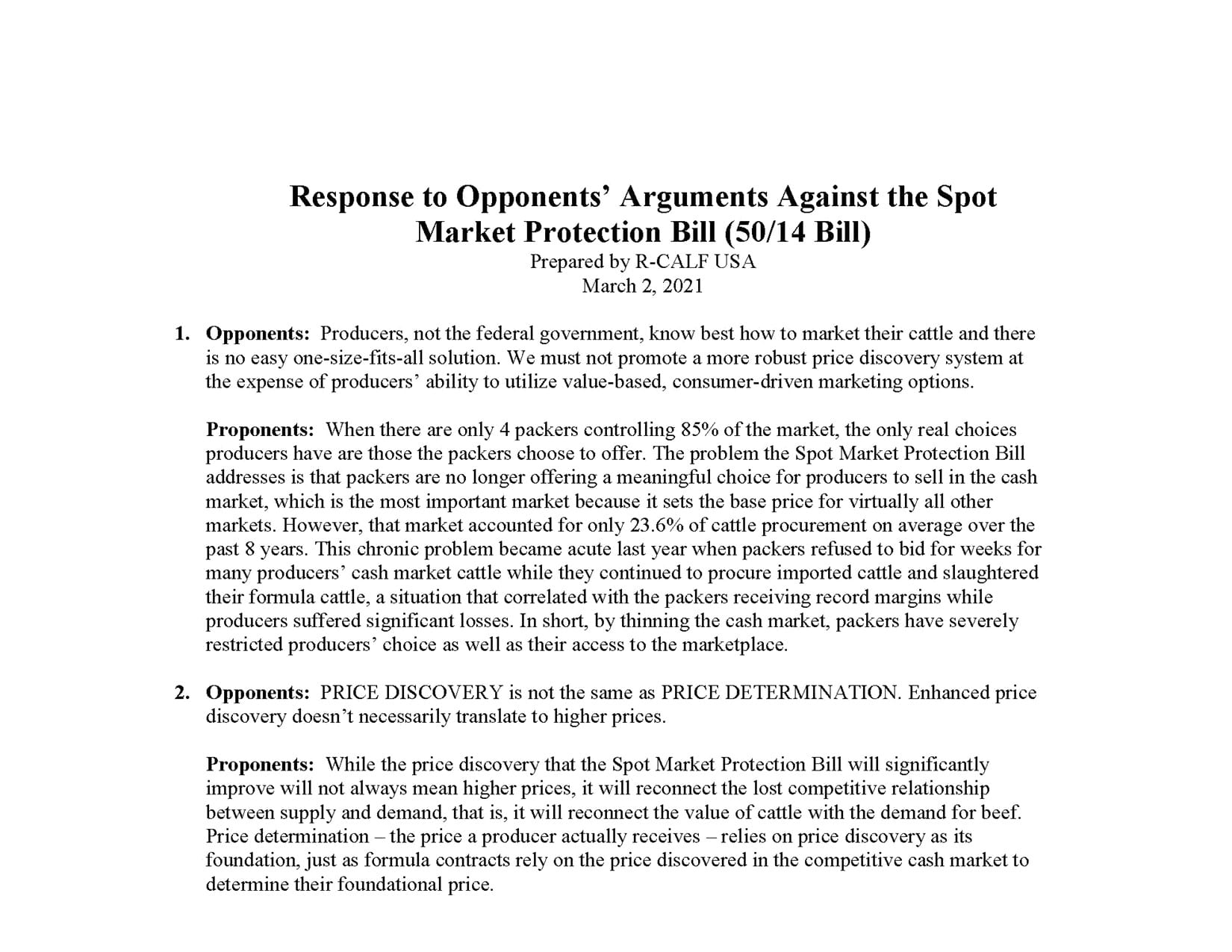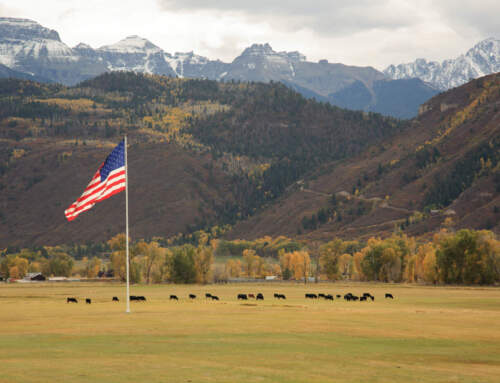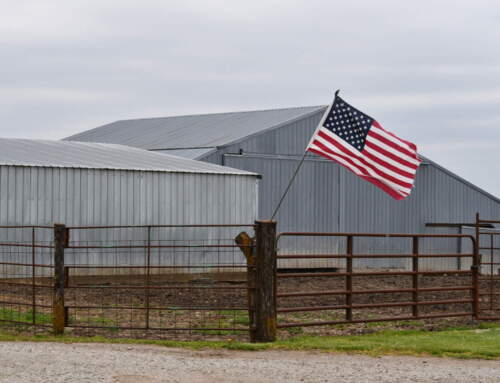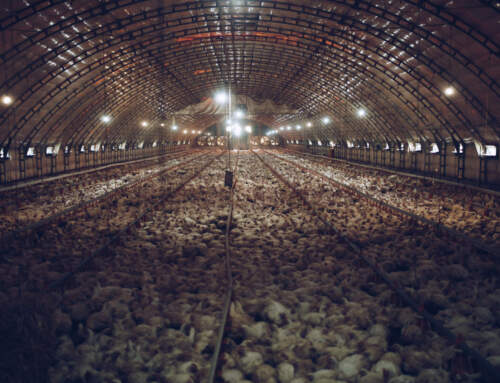Background: The meatpackers and their allies are hard at work to defeat the bipartisan proposal by Senators Charles Grassley and Jon Tester to require packers to purchase 50% of their cattle from the negotiated cash market and to slaughter those cattle within 14 days. This legislation is known as the Spot Market Protection Bill or the 50/14 Bill and it is expected to be refiled in the new Congress soon.
Meanwhile below is a list of the opponents’ arguments against the Spot Market Protection Bill (50/14 Bill) along with R-CALF USA’s responses to those arguments. Please feel free to share this with your state legislators, your members of Congress, and your friends and neighbors. Downloadable PDF available here.
Response to Opponents’ Arguments Against the Spot Market Protection Bill (50/14 Bill)
Prepared by R-CALF USA
March 2, 2021
1.) Opponents: Producers, not the federal government, know best how to market their cattle and there is no easy one-size-fits-all solution. We must not promote a more robust price discovery system at the expense of producers’ ability to utilize value-based, consumer-driven marketing options.
Proponents: When there are only 4 packers controlling 85% of the market, the only real choices producers have are those the packers choose to offer. The problem the Spot Market Protection Bill addresses is that packers are no longer offering a meaningful choice for producers to sell in the cash market, which is the most important market because it sets the base price for virtually all other markets. However, that market accounted for only 23.6% of cattle procurement on average over the past 8 years. This chronic problem became acute last year when packers refused to bid for weeks for many producers’ cash market cattle while they continued to procure imported cattle and slaughtered their formula cattle, a situation that correlated with the packers receiving record margins while producers suffered significant losses. In short, by thinning the cash market, packers have severely restricted producers’ choice as well as their access to the marketplace.
2.) Opponents: PRICE DISCOVERY is not the same as PRICE DETERMINATION. Enhanced price discovery doesn’t necessarily translate to higher prices.
Proponents: While the price discovery that the Spot Market Protection Bill will significantly improve will not always mean higher prices, it will reconnect the lost competitive relationship between supply and demand, that is, it will reconnect the value of cattle with the demand for beef. Price determination – the price a producer actually receives – relies on price discovery as its foundation, just as formula contracts rely on the price discovered in the competitive cash market to determine their foundational price.
3.) Opponents: University research indicates a mandatory policy of 50% minimum negotiated cash transactions would result in a $2.5 billion loss to the industry in the first year, and an overall loss of $16 billion over 10 years. Source: https://mtbeef.org/wp-content/uploads/2020/05/AAEA-Invited-Paper-Koontz.pdf.
Proponents: This purely theoretical study ignores the real world in which billions of dollars have been and continue to be lost by cattle producers while the volume in the cash market has decreased and remains extremely low. This is because since 2015 there has been a complete disconnect between live cattle prices and wholesale and retail beef prices. Cash receipts from the sale of cattle and calves fell from $78.2 billion in 2015 to an estimated $62 billion in 2020, a decline of $16 billion that came out of the pockets of cow/calf producers, backgrounders, and feeders. Further evidence of this complete disconnect includes that the cattle producer’s share of the consumer’s beef dollar fell to an all-time low of just 37 cents in 2020, compared to 52 cents in 2015.
4.) Opponents: There are virtually no benefits to a mandatory minimum level of negotiated transactions. Instead, a study commissioned by USDA affirms a mandatory minimum level of negotiated transactions could create considerable costs due to lost efficiency and product quality. These costs would be largely borne by cow/calf producers and consumers. Source: https://www.gipsa.usda.gov/psp/publication/live_meat_market.aspx.
Proponents: The obvious benefit of a mandatory minimum level of negotiated transactions is to counter the abusive practices of the oligopolistic beef packing industry, which has shrunk the price discovery cash market below the level needed to reflect competitive supply and demand forces in the marketplace. Just one of the “efficiencies” enjoyed by the concentrated packers is that they have reduced the cash trade window to just a short time period on Thursday or Friday of each week, which deprives cattle sellers the opportunity to bargain for higher bids. The first study listed farther below found that over 75% of cash trade cattle occurred during this narrow end-of-week window. This is not a competitive market. The USDA and the other organizations opposed to the Spot Market Protection Bill are the same groups that for the past two decades opposed every effort to prevent the U.S. cattle industry from suffering its currently dysfunctional fate. They opposed mandatory Country of Origin Labeling, the ban on packer ownership of livestock, a ban on un-priced formula contracts, and all previous spot market protection bills, to name a few. The result has been a cattle industry continually shrinking in terms of number of producers, number of cattle, number of marketing outlets, number of cattle feeders, share of the consumers’ beef dollar, returns to cattle feeding, and returns to cow/calf producers. Further evidence is the inability of the nation’s cattle producers to benefit from record beef exports, near record beef demand, and the consumer’s willingness to pay all-time record prices for beef. These groups and USDA have neither offered nor implemented any solutions to reverse the U.S. cattle industry’s downward trajectory.
5.) Opponents: Abundant research at various land-grant institutions on the impacts of mandatory minimum negotiated trading volumes show that limiting the use of value-based marketing options in the beef industry will decrease efficiency, increase processing and marketing costs, and potentially reduce beef product quality.
Proponents: What is important to note is that opponents do not use the word “competition” or the phrase “market power.” They are silent on these terms because they believe achieving market “efficiency” is more important than preserving marketplace competition. The notion that increased competition, which will occur under the Spot Market Protection Bill, will reduce beef product quality is absurd. Competition has always been the driver of quality, innovation, and progress. And, while it is true that some alternative marketing arrangements do pay premiums above the cash market based on quality, as the competitiveness of the cash market declines, so too does the price of higher-quality cattle sold under alternative marketing arrangements decline. In today’s market marked by reduced competition in the negotiated cash market, the recipients of premiums over the cash market are not actually receiving a premium, they’re merely receiving a price closer to what a truly competitive market would provide them.
6.) Opponents: Additionally, a 50% cash trade mandate for all regions would be counterproductive as research also indicates adequate price discovery can be achieved at different levels in different regions.
Proponents: Moving to a regionalized volume-setting approach that assumes southern regions need less price discovery than northern regions is simply an effort to lock-in the market power and advantage of those packers that have already shrunk the cash market below competitive levels, thus shutting off opportunities for small- to mid-sized feedlots to market their cattle in a competitive cash market. Locking in lower volumes in certain regions will ensure that new entrants cannot operate new feedlots in those regions unless they have the blessing of one or more packers. Also, regions where low cash volumes persist will have a chilling effect on any potential local and regional packer-startups as their opportunity to access supplies will remain severely limited. The lower the negotiated cash market volume, the greater the market access risk is to producers who desire to market their cattle in the cash market and the greater the barrier will be for new packer entrants.
7.) Opponents: More negotiated trade would bolster price discovery. However, a minimum negotiated trade mandate means the federal government must monitor and maintain the minimum, inviting further government intrusion into the industry.
Proponents: The goal of the Spot Market Protection Bill is to bolster price discovery by bolstering competition, and here the opponents admit the increased negotiated trade resulting from the Bill will bolster price discovery. So, what they really oppose is government intervention to preserve and protect competition in their industry. The cattle industry has known for many years that the fast-shrinking cash market was a serious problem, and for all those years no one intervened to address the problem. Even Economist Stephen Koontz, who opposes the government mandate, warned the cattle industry six years ago (in February 2015) that “Addressing the issue of thinning cash fed cattle markets require action by the industry. The problem – as in all public good problems – will not solve itself (emphasis added).” Obviously, the industry did not or could not heed this warning as the shrunken cash market persists. Importantly, neither individual cattle producers nor their associations have the means to force the oligopolistic packers to stop benefiting from the shrunken cash market. That is why the government must take steps to restore competition for the entire U.S. cattle industry.
8.) Proponent Conclusion: Capitalism is “characterized by the freedom of capitalists to operate or manage their property for profit in competitive conditions.” Competitive markets level the playing field between small and large competitors. Independent cattle producers don’t need a head start, all they need is the opportunity to compete and a fair and motivated referee who isn’t afraid to blow the whistle. The Spot Market Protection Bill does simply that, it does not pick winners and losers, it moves us closer to a purely competitive and transparent market.
9.) Proponent’s list of Studies:
-
- A more recent study by USDA found that in 2009 the cash market volume was at nearly 40% and at that level the packers’ use of alternative marketing arrangements (AMAs) was associated with lower cattle prices, ranging from -$3.11 per cwt in Kansas and -$0.24 per cwt in Iowa. It also found that prices for AMA cattle are influenced by changes in price of negotiated fed cattle. It further found that 90% of the “efficiencies” created by AMAs were increases in revenue to the beef packers and beef marketing industry. Source: Investigation of Beef Packers’ Use of Alternative Marketing Arrangements, https://www.r-calfusa.com/the-issues/competition-issues/.
- An April 2018 report by the Government Accountability Office found that packers were likely to exercise “market power” in areas with less competition and it attributed the 2015 price collapse in part due to less competition among packers in some areas of the country that caused lower cattle prices. Source: https://www.gao.gov/products/GAO-18-296.
- A 2011 regime switching study by Xiaowei Cai, et al., University of Wisconsin, found that oligopolistic packers switch between cooperating and competing depending on whether short-term cattle supplies are tight (competition phase) or plentiful (cooperation phase): Source: https://onlinelibrary.wiley.com/doi/10.1111/j.1574-0862.2010.00503.x
- Oklahoma State University Extension issued a paper stating, “Negotiated transactions and the price discovery they support benefit everyone in the market and sensible efforts to increase the volume of negotiated transactions in the fed cattle market are well-founded and worth supporting.” Source: http://pods.dasnr.okstate.edu/docushare/dsweb/Get/Document-12077/E-1053%20Fed%20Cattle.pdf.
- The USDA’s Livestock and Meat Marketing study found that when the cash market volume was at nearly 62% from 2002-2005, the packers were able to realize efficiencies during this period despite there being a far more robust negotiated cash market than exists today. Further, the study found that smaller producers, defined as all feedlots and all cow-calf operations not among the nation’s 25 largest feedlots or 25 largest cow-calf operations, were substantively more dependent on the negotiated cash market than were the largest of feedlots and cow-calf operations (those among the largest 25, respectively), with an estimated 85% of smaller producers using only the negotiated cash market. Source: https://www.gipsa.usda.gov/psp/publication/livemarketstudy/LMMS_Vol_3.pdf.
- A 2011 study by Andrew Lee and Man-Keun Kim found that beginning with only about 20% of procurement outside the negotiated cash market (meaning when the negotiated cash market volume is as high as 80%), fed cattle prices are nevertheless shown to be negatively impacted. Source: https://ideas.repec.org/a/ags/jordng/174502.html.
- In 2009 Economist Stephen Koontz described a finding by economists Tian Xia and Richard Sexton indicating that if packers secure 50% or more of their needed cattle supplies through means other than the negotiated cash market, then the fed cattle market price can be depressed to the monopsony level and maximum market power exerted. Source: https://www.justice.gov/sites/default/files/atr/legacy/2010/02/26/255234.pdf.
# # #
R-CALF USA (Ranchers-Cattlemen Action Legal Fund, United Stockgrowers of America) is the largest producer-only lobbying and trade association representing U.S. cattle producers. It is a national, nonprofit organization dedicated to ensuring the continued profitability and viability of the U.S. cattle industry. Visit www.r-calfusa.com or, call 406-252-2516 for more information.






